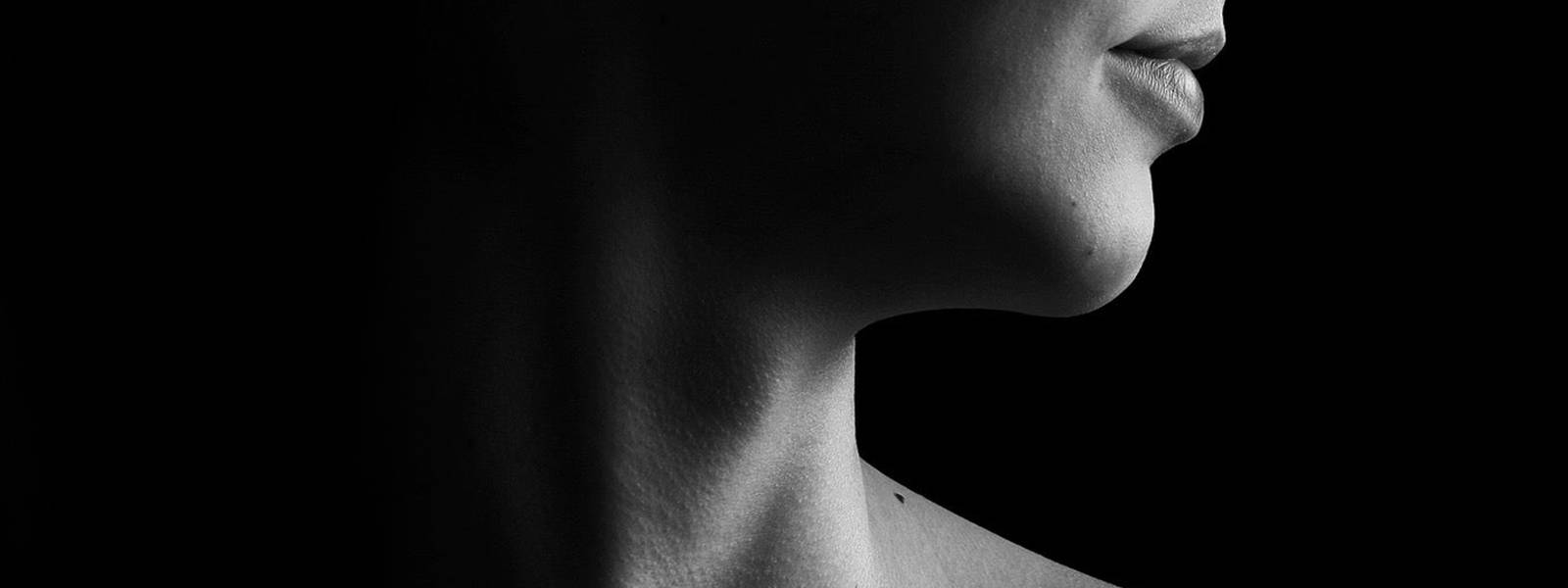
COU, NEZ, LÈVRES…POURQUOI CES ZONES SONT PLUS SENSIBLES AU FROID ?
Nombreuses sont les agressions extérieures qui mettent votre peau à rude épreuve : pollution, vent, rayons UV… Cela est d’autant plus vrai avec le froid de l’hiver qui attaque chaque partie de votre visage. La déshydratation et la sensation de tiraillement sont des symptômes courants mais généraux. Pour aider et protéger efficacement votre peau, il est important de prendre en compte les caractéristiques propres à chaque partie du visage. En effet, la structure de la peau du cou, du contour de l’œil, du front, des arêtes du nez ou des lèvres n’est pas la même. Notre article va vous permettre de mieux comprendre les réactions de certaines parties de votre visage face au froid et, ainsi, d’adopter la bonne routine beauté.

NABILA
Février 2019
1. LA PEAU POSSÈDE UNE STRUCTURE UNIQUE
La peau a pour caractéristique d’être plus ou moins épaisse selon la partie du corps. Ainsi, l’épaisseur de la peau est d’environ 0.5 mm sur le corps. Plus la peau est épaisse, plus elle est résistante. C’est pourquoi les parties les plus sujettes aux agressions et aux micro traumatismes, comme les paumes des mains et la plante des pieds, ont une épaisseur d’environ 1 mm voire plus selon l’âge et le sexe. Sur le visage, en revanche, la peau a une épaisseur de 0.12 mm seulement. Elle est 4 fois plus fine sur les lèvres et le contour des yeux et peut être atteindre 0,1 mm sur les paupières. Vous comprenez donc mieux l’importance d’apporter des soins adaptés à chaque partie de votre visage.
2. LES RÉACTIONS DES PRINCIPALES PARTIES DU VISAGE FACE AU FROID
Le cou, une partie trop souvent oubliée
Le cou est une partie trop souvent oubliée au moment d’appliquer une crème hydratante, une protection solaire et autres soins de la peau. Avec les lèvres et les yeux, le cou est pourtant une partie attractive mais aussi la plus vue et exposée. Chez les artistes de la Renaissance, le cou d’une femme est la représentation même de la finesse, de la délicatesse et de la douceur. Garder un cou jeune et ferme fait souvent partie de nos préoccupations esthétiques.
Malheureusement, cette partie du corps est particulièrement exposée au vieillissement. Avec l’âge, le collagène et l’élastine, qui sont responsables de l’épaisseur, de l’élasticité et de la souplesse de la peau, déclinent. Leur déclin a un effet plus intense sur le cou, le rendant plus vulnérable face aux rides, à l’affaissement, aux points noirs ou encore à l’hyperpigmentation. Bien entendu, tout le monde vieillit différemment. Certaines personnes développent des rides et voient apparaître des taches sur le visage, le cou et le torse. Chez d’autres, le cou peut devenir une zone d’accumulation du gras.
Le vieillissement du cou est dû à l’affaissement des tissus conjonctifs et à la rupture de la bande séparant ses muscles verticaux : le platysma. Lorsqu’il se contracte, ce muscle permet à votre visage d’avoir des expressions faciales, d’ouvrir et de fermer la bouche, de froncer les sourcils… Il commence à la base du torse, remonte à l’avant du cou et se termine en bas du visage, au niveau du bas du menton.
C’est une des zones les plus érogènes de la surface de notre peau qui s’active au moindre toucher. Des causes à la fois externes et internes peuvent accélérer le vieillissement du cou. Certaines techniques et quelques astuces sont intéressantes pour limiter le relâchement et le vieillissement du cou sans traitements chirurgicaux.
sachez que l’exposition au soleil endommage la peau du cou et lui donne encore plus de rides. Pensez donc à utiliser une crème solaire, et pas seulement en été. De plus, choisissez une crème ou un sérum hydratant que vous appliquerez sur l’ensemble de votre cou, surtout le soir pour une meilleure pénétration des actifs. Notre Sérum redensifiant well aging, par exemple, est un sérum réparateur anti-âge qui agit contre le vieillissement cellulaire, assouplit, raffermit et hydrate le visage et le cou.
Contrairement à ce qu’on pourrait penser, aucun exercice physique du cou ne le rajeunira. Certains exercices peuvent même étirer encore plus la peau et favoriser l’affaissement. En revanche, les massages faciaux peuvent faire du bien et agir sur la circulation sanguine, même s’ils ne rendront pas votre cou plus jeune et n’élimineront pas les rides.
Le contour de l'œil, l'une des parties les plus fines du visage
En raison de sa faible teneur en glandes sébacées et de la quasi absence de film hydrolipidique, le contour des yeux est une zone plus sèche que le reste du visage. Pauvre en collagène et en élastine, elle est aussi moins élastique. Mais la peau du contour des yeux est très vascularisée. Lors du processus de vieillissement, elle devient plus fine et les vaisseaux sanguins sont plus apparents. Des facteurs externes et internes, comme le tabac, la fatigue ou le stress, peuvent aggraver ce phénomène. Le stress altère la tonicité des capillaires sanguins, les toxines s’accumulent et le sang stagne, faisant apparaître des cernes foncées. Avec l’âge, la circulation sanguine dans le contour de l’œil est également moins fluide. C’est pourquoi il est important de bien hydrater et surtout de doper la circulation en choisissant des soins hydratants et un contour des yeux anti cernes.
Choisissez une crème à la texture légère pour le jour et un soin plus riche et dense pour le soir. Enfin, optez plutôt pour des contours des yeux drainants car l’action anti-âge ou hydratante est souvent apportée par une bonne crème de jour.
Le front, une des parties de la zone T
Le front appartient à la fameuse « zone T », constituée également du nez, des ailes du nez et du menton. Le tout formant un T lorsqu’on le dessine… Mais pourquoi différencier cette zone des autres parties du visage ? La peau de la zone T a une composition différente et est plus grasse que le reste du visage. Les glandes sébacées sont particulièrement nombreuses au niveau du front et sont chargées de produire le sébum qui constitue le film hydrolipidique. Avec le froid, la production de sébum est ralentie et la teneur en eau de la peau est anormalement basse. La zone T, normalement plus grasse, s’assèche et des sensations de tiraillements se font ressentir.
Pensez à bien hydrater et libérer les pores pour délivrer à votre peau les nutriments essentiels tout en évitant les tiraillements, nous avons formulé l’exfoliant doux Pépite de la Palmeraie. Riche en polyphénols et composé d’aloe vera et de miel, ce soin laisse une peau nette, un teint lumineux et plus frais.
Les arêtes du nez, une partie très exposée au froid
La peau du nez n’est pas fondamentalement différente du reste du visage. En revanche, c’est une partie du corps très exposée au froid. Lorsqu’il fait froid, la circulation sanguine se concentre sur les organes vitaux. Les vaisseaux sanguins se contractent pour limiter la perte de chaleur à l’extérieur, provoquant un refroidissement et un assèchement de toutes les extrémités (nez, doigts, orteils). Les arêtes du nez sont aussi sujettes aux rougeurs et aux irritations, surtout lorsque vous ne cessez de vous moucher en hiver.
Il peut être alors utile d’emporter avec vous notre baume nourrissant Secret Nomade à appliquer à tout moment de la journée et autant que besoin sur les petites zones sèches du visage (en évitant le contour des yeux). Grâce à la bille « roll-on » du flacon, l’application est ludique et pratique !
Les lèvres subissent directement les effets du froid
Les lèvres ont la particularité d’être dépourvues de glandes sébacées. Elles ne bénéficient donc pas d’un film hydrolipidique pour les protéger des agressions et du froid. Les lèvres subissent ainsi directement les effets du froid et ont besoin d’un soin ultra protecteur. L’idéal est d’opter pour une protection à base de cire, de beurres ou d’huiles. La cire liquide de jojoba, par exemple, est non grasse mais possède un fort pouvoir hydratant et restructurant, c’est l’un des actifs phares de notre baume Secret Nomade.
Pour en savoir plus sur les facteurs qui agressent votre peau, consultez également notre précédent article : « Vieillissement cutané, vous pouvez agir ! ».
Nous restons comme toujours à votre disposition pour toutes vos questions. A bientôt sur notre blog.
